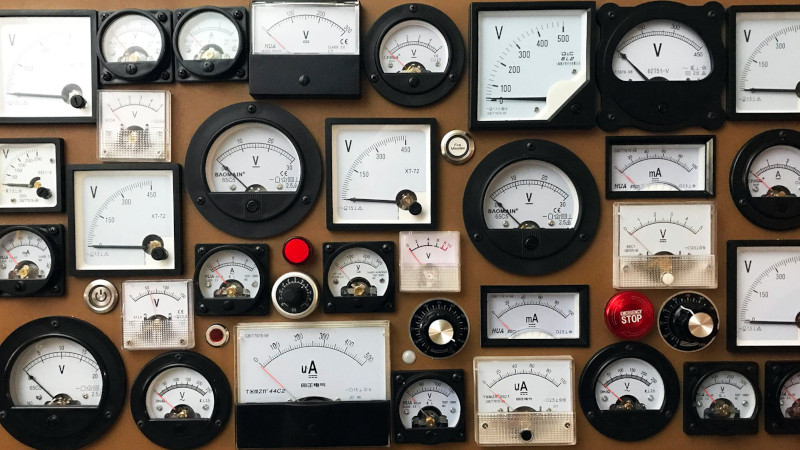Almost every type of retro indicator technology from a Nixie tube to a flipdot with everything else in between has found itself on these pages in some form of artwork or decoration. It’s pleasing then to see one that hasn’t appeared so much over the years, and particularly at the hands of our colleague [Voja Antonic]. He’s taken a large array of moving-coil panel meters and hooked them up to a microcontroller board that’s triggered by a PIR sensor. Normally the readings are random, but get too close to it and all those needles start moving, making for a very different take on an electronic wall display.
He’s not given us the details of the control circuit he’s used, but in a sense that matters little. We think any Hackaday reader who knows one end of a soldering iron from the other should be able to produce a small DC current from a DAC to drive a meter, and we don’t think the software to make random readings would trouble many of you either.
Meanwhile [Voja] has produced so many interesting projects over the years, not least the 2022 Superconference badge. Here’s one from a few years ago.
















Would have been nice to have a video posted. Nice way to show off the classic panel meter. Gives me an idea to something similar except have mine in a row that gradually light up like the Krell panel discovered by Dr. Morbius in Forbidden Planet .
Considering the scales evident on some of those meters, if things are indeed being driven by a microcontroller PWM, it seems likely that the meters themselves may have been somewhat modified.
If you absolutely had to get full scale movement on a 400V meter using a control that tops out at say 5V, you could conceivably smallen the meter’s internal series resistor by sticking something in parallel with it, at the cost of opening its casing.
Otoh with ammeters, uA would be easy but obviously you’re not getting 10A directly off a PIC or AVR, and you’d be stuck with removing the shunt. Sometimes these were even external.
Yes, they are modified. When you remove the shunt resistors, most of them are full scale at 0.8 or 1 mA. Series resistors are added externally, on the control board, and are also used in the low-pass filter.
You know what would be fun – write some code to take an (x,y) and map it to the meters so that they all show zero except the ones near the chosen (x,y). Then, rig an eye-tracker to supply the x,y values, so that only the meter you’re looking at has deflection.
Even better, every meter except the one you are looking at has something on it. Your job, read the meter. But the meter you are looking at drops to zero as soon as it detects you are looking at it.
Neat concept but I’m not thrilled by it aesthetically. They are too crowded together, it has a sense of horror vacui about it. A visually pleasing control panel it is not.
Per previous commenter, not aesthetically pleasing.
Sorry about the negativity towards his efforts, but my forbearing thought is that this is poor use of some damn good meters.
Nice work. I have a ton of analog meters, some of them VOMs with some burned-out ranges (students measuring voltage on Ohms scale, etc). I was wondering what to display, and in the comments I found many good ideas (temperature, wind speed, inflation, covid numbers, stock prices :))
” covid numbers”
You mean which Greek Alpha-Beta is assigned to the latest variant?
B^)
That’s not ever art.
I agree.
But will it be art if I name it “Chernobyl April/26/1986”? :))